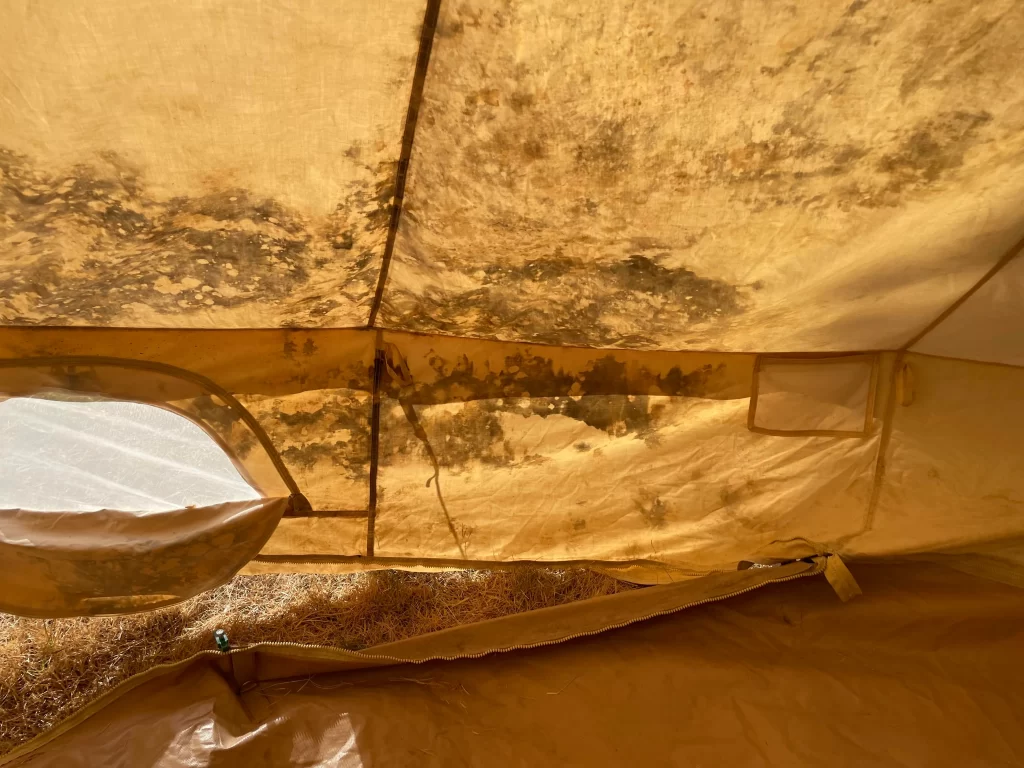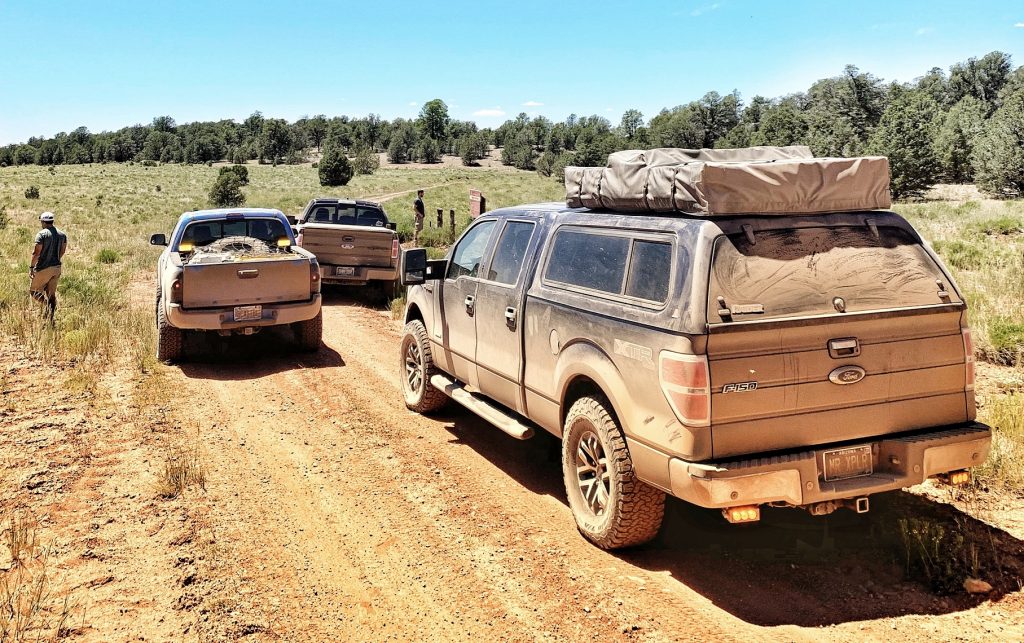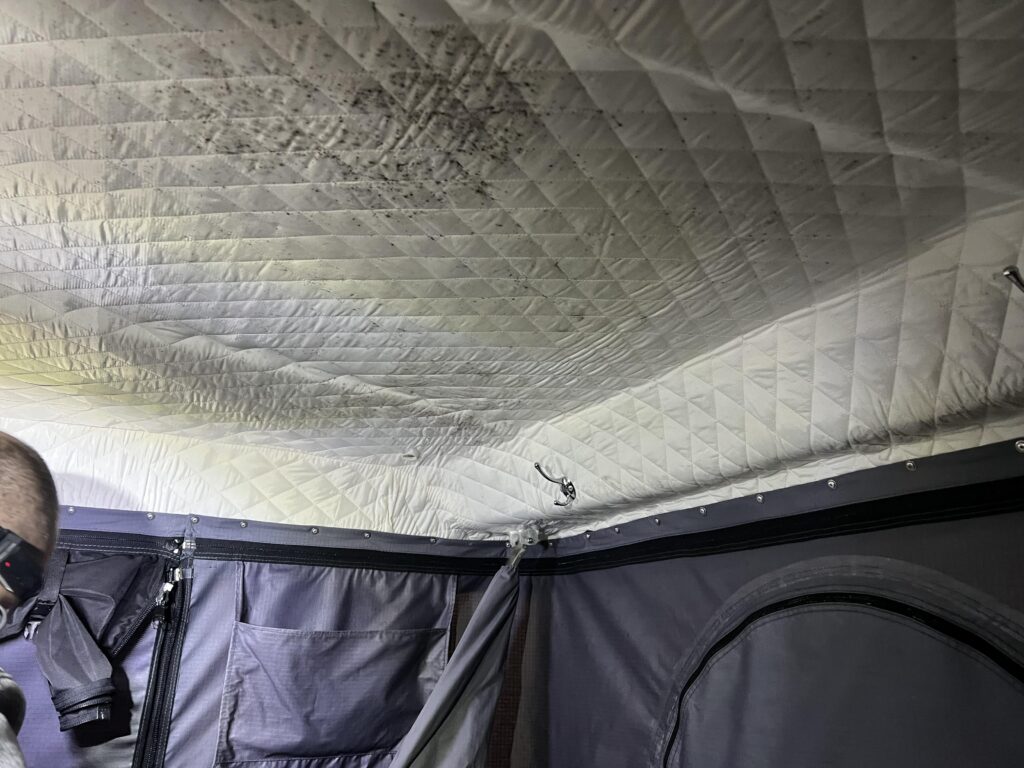Properly cleaning and maintaining your tent is essential for its longevity and performance, especially in humid or sunny climates where damage can build up fast. Skipping this care can lead to a range of problems that often start small but quickly get worse:
Mould and mildew buildup – caused by storing your tent while it’s still damp
Funky smells – especially in humid environments, and hard to get rid of once they set in
Fabric degradation – from dirt, UV exposure, or using the wrong cleaning products
Leaky seams or waterproof coating failure – due to neglecting sealing or reproofing
Sticky or broken zippers – from dust, sand, or grime buildup over time
This guide breaks down how to clean both traditional camping tents and rooftop tents—covering softshell and hardshell models—so you can avoid these headaches and keep your setup adventure-ready.

General Cleaning Supplies
Before starting, gather the following items:
-
Mild, Non-Detergent Soap: Protects fabric integrity and waterproof coatings.
-
Soft-Bristle Brush or Sponge: Effectively removes dirt without causing damage.
-
Lukewarm Water: Ideal for cleaning without harming materials.
-
Microfiber Cloths: Useful for spot cleaning and drying.
-
Seam Sealer: Maintains watertight seams.
-
Waterproofing Spray: Restores the tent’s water repellency.

Cleaning Traditional Ground Tents
-
Preparation: Set up your tent in a shaded area to prevent UV damage. Remove loose dirt by shaking or gently brushing the fabric.
-
Spot Cleaning: Address stains with a sponge or cloth using a mild soap solution. Avoid harsh scrubbing to prevent fabric wear.
-
Overall Washing: Fill a tub with lukewarm water and add a tent-specific cleaner. Immerse the tent and gently clean with a soft brush.
-
Rinsing: Thoroughly rinse with clean water to remove all soap residues.
-
Drying: Air-dry the tent completely in a shaded, well-ventilated area. Ensure it’s fully dry to prevent mold and mildew.
-
Seam and Waterproofing Maintenance: Periodically apply seam sealer and waterproofing spray to maintain water resistance.
Consequences of Improper Care: Failing to dry the tent thoroughly before storage can lead to mold and mildew growth, causing unpleasant odors and fabric deterioration. Using harsh detergents or abrasive tools can strip waterproof coatings and weaken the material, leading to leaks and reduced lifespan.
Cleaning Rooftop Tents
Softshell Rooftop Tents
-
Debris Removal: Before folding, brush off any loose debris like leaves or dirt.
-
Fabric Cleaning: With the tent fully opened, use a mild soap solution and a soft brush to clean the fabric, focusing on areas prone to dirt accumulation.
-
Rinsing and Drying: Rinse thoroughly with clean water. Air-dry completely in a shaded area to prevent UV damage.
-
Mold Prevention in Humid Climates: In humid environments, ensure the tent is entirely dry before storage. Regularly air out the tent between trips to prevent mold growth.
Consequences of Improper Care: Storing a damp softshell tent can lead to mold and mildew, which not only produce foul odors but can also degrade the fabric and compromise structural integrity.

Hardshell Rooftop Tents
-
Exterior Cleaning: Clean the hardshell exterior with automotive-grade cleaners suitable for the tent’s finish. Avoid abrasive materials that could scratch the surface.
-
Waxing: Apply a recommended automotive wax every six months to protect against UV rays and environmental contaminants.
-
Interior Maintenance: Open the tent periodically to air out the interior, especially after trips in humid conditions, to prevent moisture buildup and mold.
Consequences of Improper Care: Neglecting the exterior can result in UV damage and a dull appearance. Failing to air out the interior can lead to moisture buildup, promoting mold growth and unpleasant odors.

Climate-Specific Maintenance Tips
-
Humid Climates: Always ensure the tent is completely dry before storage. Regularly air out the tent, even if not in use, to prevent mold and mildew.
-
Sunny Climates: Limit prolonged exposure to direct sunlight to prevent UV damage. Utilize UV-protectant sprays designed for outdoor fabrics to enhance resistance.
By following these detailed cleaning and maintenance practices, you can significantly extend the lifespan of your tent, ensuring it remains a reliable shelter for your outdoor adventures.


